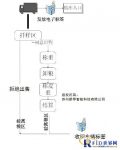
RFID-based visualized management system for the whole process of grain purchase
[ad_1]
In our country, the most important task for the purchaser in the annual national grain depot collection, industrial use of grain, and grain collection is to purchase and store grain in real time, with quality and quantity. The whole process of grain collection and storage includes: sample inspection, pricing, weighing, storage, payment and other links.
Aiming at the current shortcomings in the grain purchase process, Xinhui IoT has targeted the overall solution of a visualized management system for the entire grain harvesting process based on RFID technology.This system is mainly realized through the installation of UHF-RFID special electronic tags and reading equipmentRFID Automatic monitoring, RFID automatic guidance, RFID automatic settlement. The system also integrates a video surveillance system. At present, it is widely used in industries such as national grain depots and corporate weighing fees.

Introduction to System Application:
1. Enter the factory with dual cards to lock the car and grain
(1) When the grain sales vehicle enters the gate of the grain depot, the grain seller receives the HF-RFID electronic settlement card, and the gatekeeper automatically writes the vehicle information such as the license plate number, model, etc. into the UHF-RFID electronic tag lock;
(2) The gatekeeper fixes the electronic tag lock with the basic information of the vehicle on the body, so that the grain truck entering the grain depot has a unique identification. Monitor the process of sampling, checking, confirming the buying and selling price, warehousing, and settlement of grain transport vehicles in the grain depot.
(3) In the grain depot, the HF-RFID card held by the grain seller and the code of the vehicle UHF-RFID electronic tag lock automatically correspond to ensure the unity of people and vehicles.
2. Sample pricing
Cars entering the grain depot enter the sampling area to confirm that the quality of the grains transported is priced by quality.
(1) The UHF-RFID reader/writer automatically records the electronic identification code that enters the vehicle;
(2) The driver manually puts the settlement card in his hand on the small conveyor belt, and the conveyor belt automatically sends the settlement card to the operating position of the staff in the sampling area;
(3) The staff in the sampling area confirm that the body tag lock is consistent with the settlement card of the conveyer;
(4) Carry out a sample inspection of the grain in the vehicle; the HF-RFID HF-RFID card carried by the food sender is used to record the quality, weight, purchase price, etc. of the grain.
(5) Grading and pricing based on the quality of food samples tested;
(6) Before the grain truck drives out of the sampling position, the food sender sees the price of the grain to be sold, and can choose whether to sell or not to sell, sell it into the weighing area, and not sell it out of the storage area.
Three, weighing
(1) A vehicle that agrees to sell grain enters the weighing area;
(2) UHF-RFID reader-writer automatically recognizes the vehicle;
(3) Weighing data is automatically recorded in the settlement card;
(4) The settlement card is returned to the food seller.
4. Grain unloading and outgoing area
(1) A weighing truck carrying an electronic tag lock enters the loading and unloading area, and unloads the grain to the loading and unloading area;
(2) When the empty vehicle is driven to the weighing area, the vehicle is weighed a second time, that is, the tare weight of the vehicle, so as to obtain the actual weight of the grain and write the weight of the grain into the settlement card;
(3) The food seller collects the payment at the settlement center with the settlement card;
(4) After completing the grain sale, the vehicle will drive out of the warehouse door. At this time, the grain warehouse staff will remove the electronic tag lock fixed on the vehicle, and the entire grain collection process is completed.
[ad_2]





